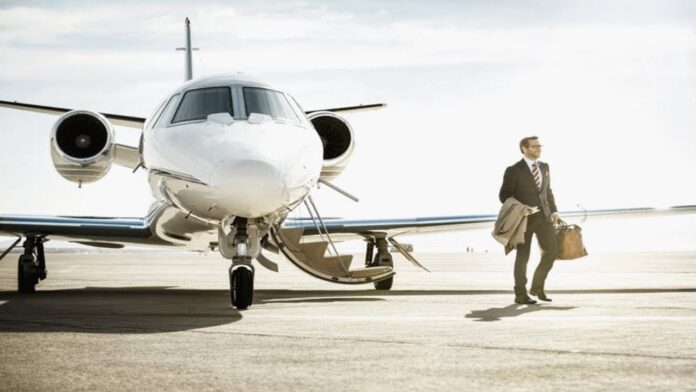Private jet rentals travel offers unparalleled convenience, luxury, and efficiency, making it a preferred choice for discerning travelers. However, beyond the opulence and exclusivity, safety remains the foremost priority in the world of private jet rentals. Ensuring secure private jet rentals is not just a standard; it’s an uncompromising commitment to safeguarding passengers and crew.
We will explore the rigorous processes and standards that charter operators adhere to, the meticulous maintenance protocols for aircraft, and the qualifications and training of flight crews. We’ll also discuss the safety considerations within charter agreements, pre-flight safety checks, in-flight measures, and emergency response plans.
The Charter Operator Selection Process
Ensuring safety in private jet rentals begins with choosing the right charter operator. Research is paramount.
Researching Reputable Charter Operators: Start by researching and identifying reputable charter operators. Look for companies with a track record of excellence in safety and service. Online reviews and industry rankings can be valuable resources.
Evaluating Safety Records and Certifications: Scrutinize the safety records of charter operators. Ensure they hold the necessary certifications from aviation authorities like the FAA (Federal Aviation Administration) or its equivalent in your country.
Assessing Operator Experience and Reputation: Experience matters. Opt for operators with a proven history of safe operations. Consider their reputation within the industry and among previous clients. A transparent and professional approach to business is indicative of a commitment to safety.
IAircraft Safety Standards
Private jet safety extends to the aircraft itself, with strict standards in place.
Compliance with Regulatory Agencies. Confirm that the charter operator adheres to the regulations set by aviation authorities. Compliance is a non-negotiable aspect of aircraft safety.
Maintenance and Inspection Protocols. Private jet maintenance is meticulous and adheres to stringent protocols. Ensure that the operator conducts regular inspections and adheres to manufacturers’ recommendations.
Aircraft Safety Features and Technology. Modern private jets are equipped with advanced safety features and technology, such as collision-avoidance systems and updated avionics. Inquire about the safety features of the aircraft you’ll be flying in.
Crew Qualifications and Training
The qualifications and training of the flight crew are integral to private jet safety.
Experienced Pilots and Crew Members. Verify that the pilots and crew members have ample experience in operating private jets. Experience is a crucial factor in ensuring the safety of your flight.
Ongoing Training and Certification. Pilots and crew should undergo regular training and certification updates to stay current with industry best practices and safety standards.
Crew-to-Passenger Ratios. A proper crew-to-passenger ratio is essential to managing in-flight safety. Ensure that the charter operator maintains these ratios to meet safety standards.
Safety in Charter Agreements
Your charter agreement should include safety clauses and considerations.
Clauses for Safety Standards. Review your charter agreement to ensure it includes clauses that address safety standards and procedures. This ensures a clear understanding of expectations.
Insurance Coverage and Liability. Confirm that the charter operator has adequate insurance coverage to handle any unforeseen incidents. Understand the liability provisions in the agreement.
Emergency and Contingency Plans. Charter agreements should outline emergency and contingency plans. Know the procedures in case of diversions, delays, or in-flight emergencies.
Pre-Flight Safety Checks
Safety protocols begin well before takeoff.
Aircraft Inspections. Prior to each flight, private jets undergo thorough inspections to ensure they are in optimal condition. This pre-flight check includes systems, equipment, and maintenance records.
Weather and Route Analysis. Safety extends to weather and route analysis. Flight crews analyze weather conditions and plan routes to avoid turbulence and adverse weather, enhancing passenger safety and comfort.
Passenger Briefings and Emergency Procedures. Passengers receive briefings on safety procedures and emergency protocols before takeoff. Understanding these instructions is crucial for passenger safety.
In-Flight Safety Measures
In-flight safety measures are meticulously planned and executed.
Emergency Equipment and Protocols. Private jets are equipped with emergency equipment, including life vests, oxygen masks, and fire extinguishers. Flight crews are trained to respond to emergencies swiftly and effectively.
Communication and Navigation Systems. Private jets are equipped with advanced communication and navigation systems to ensure constant contact with air traffic control and a swift response to any situation.
Medical Emergency Preparedness. In the event of a medical emergency, flight crews are trained to provide basic first aid and coordinate with medical professionals on the ground for further assistance.
Emergency Response and Contingency Plans
Contingency planning is integral to private jet safety.
Handling In-Flight Emergencies. Flight crews are trained to handle various in-flight emergencies, from medical issues to mechanical problems, ensuring passenger safety remains a top priority.
Diversion and Alternate Airport Procedures. If necessary, private jets can divert to alternate airports due to weather or other issues. Protocols are in place to manage these situations safely.
Coordination with Authorities. In the rare event of an emergency, private jet operators coordinate with relevant authorities and agencies to ensure the safety and well-being of passengers and crew.
Conclusion
In conclusion, safety is the bedrock of private jet rentals. Ensuring secure private jet rentals involves meticulous operator selection, compliance with safety standards, crew qualifications, and thorough safety protocols. From pre-flight checks to in-flight safety measures and emergency response plans, every aspect is designed to prioritize passenger safety and peace of mind. When it comes to private jet travel, safety is not an option; it’s a non-negotiable commitment that ensures travelers reach their destinations securely and confidently.
